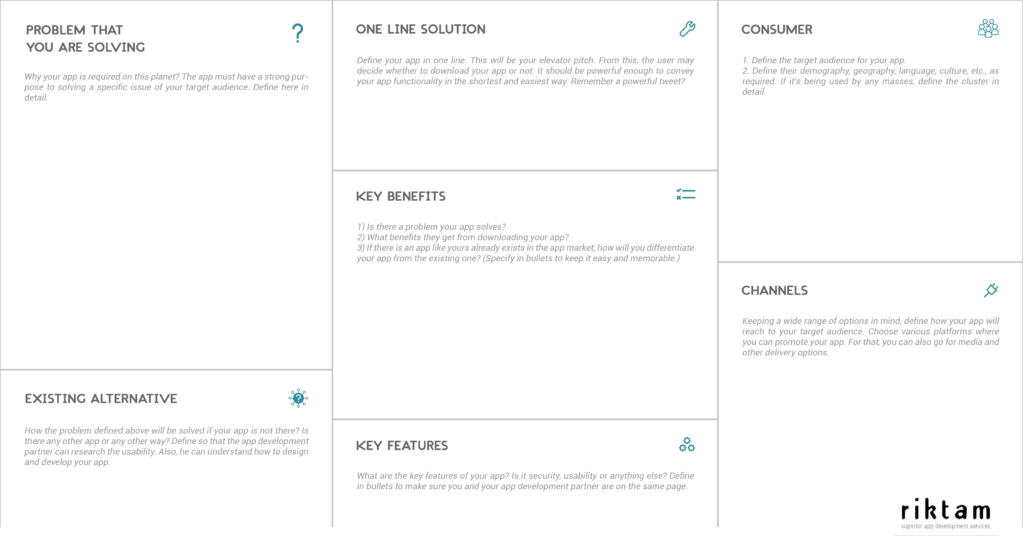Five things to plan for your mobile application development
To start planning for a mobile app is more crucial than developing it. Planning beforehand will help you save much time, money as well as unnecessary worries in the future. That’s why it’s important for you to have a well-planned and structured process to execute the concept. Because a proper plan will help you proceed in every stage of the mobile application development easily.
In fact, there are various advantages of planning for a mobile application development such as:
- You can clearly lay out the concept of the app.
- You can contemplate on all the features you would need for the app.
- This process will help you eliminating delays and overhead costs as we discussed above.
- You can understand how to engage your customers and be useful to them.
- It will help you developing a relevant and significant app as you will be defining each aspect of your goals.
Well, the above points are a few of the them that you must know. Let’s see how to start with the mobile application development and how to do a pre and post-planning for it.
1) Create an app model canvas
The first and foremost, you will have to sketch an app model canvas like you would do for any other business. Drawing an app model canvas is to illustrate the app requirements. You would be analyzing the app model to identify their potential.
Drawing your app model canvas is as easy as it is to sketch something on a tissue paper. It combines seven blocks with having powerful questions on each. You can map, test, and iterate your app idea on the app model canvas until you don’t finalize one. You can also draw the canvas on a white or black board, and use virtual sticky notes to analyze. The canvas will include various factors, from the purpose of your app to your target audience and the features and benefits of your app.

Image Source Riktamtech.com
This allows you to draw, design, describe, invent and pivot your app model. So you are free to map each of its elements to real app components for your business. All you have to do is repeat the process from top to bottom and right to left until you get an ultimate result of your goal.
2) Validating the initial app idea
As an entrepreneur, it’s important that you prove to yourself whether your app idea is a failure or a success. How will you know that the app you are planning to develop will hit the market? In that case, introducing an idea validation tool to your planning process would be a plus. In fact, it’s a must-do exercise that will help entrepreneurs understand if the app idea is worth pursuing or not.
There are various ways of introducing idea validation tool such as:
- Identify hot trends – Trends are determined by researching the habits or behaviors that are popular among consumers in the current market. Similarly, you need to research what’s trending more in the app market. Is there any similar app like yours already exist in the market? If yes, then find out how it’s performing, what are the most-clicked keywords and what’s people’s reaction to such kind of apps.
- Identify your audience – After searching for the trending keywords, the next step would be identifying your audience and target them in groups. The social media websites would be of great help in order to target groups such as Facebook, Twitter, LinkedIn, etc. On these websites, you will be able to find groups and communities. So, you can check if they are discussing a problem that your app can solve or something relevant to your app idea. This will help you build interaction to your target audience.
- Make a landing page – It is used for various marketing purposes. You will be directly marketing your app to your potential customers through the landing page or free website of your app. It will provide further information about your app after clicking on a smaller embedded advertisement on other pages. So generally, the landing page combines the elevator pitch, email address collection form, and basic screenshots of how the app look like. According to the people’s responses, you can identify and validate the app idea.
3) Draft specific requirements
Every activity follows a specific procedure. The mobile app development requires a procedure too. Following the right kind of procedure will help the development process to complete with an ease. It consists of four steps and they are – Research, Planning, Development, and App Launch.
- When it comes to research the app idea, make sure that you concentrate on three important things and they are the core idea of your app, the market analysis and what the audience would look for an app like yours.
- Once you are done with the research, you should carefully plan it before you start developing the app. To start with, write down the important aspects of your app, mind map the general purpose and then brainstorm it. Then comes the platform selection like what all devices would be compatible with your app. Next, you will have to sketch prototype of your app which you will be showing to the app developers to get it developed.

Image source pixabay.
- As now you are ready for the development of your app, you will have to look for a top mobile application development agency who will finish your project within the specific time and budget. The most important part of the development is to have an attractive UI and UX design that users will fall in love with. Once, the design is ready, it’s time to test the app, fix the bug, test it again and repeat the process until the app is completely bug-free.
- Once you feel comfortable with the design and development of your app, it’s time to submit the app and publish it in the app store. But, before you publish the app, make sure you promote and market your app to the target audience.
4) Choose a device platform for your app
Choosing a device platform for the app is the most crucial part which comes before the development process. You have to decide whether you want to go for Android, iOS or both the platforms. To decide which is the most important platform for an app like yours, you need a set of clear evaluation.
So, what’s the smartest way to choose the right platform for your app? It includes various factors such as:
- The nature of your targeted audience.
- Defining where the targeted audience can be easily found.
- Defining their demography, etc.
- Popular app categories
It would be a different situation if your budget is low and you want to focus a single device platform. In such case, you can target the other platforms later. However, you need a mastery in depth to understand which platform should be targeted first. There are various categories of apps like sports, health, and fitness, music, entertainment, media, shopping, etc., you have to understand which category is more popular among the iOS users and which ones among Android users. Mostly, entrepreneurs choose multiple platforms to reach a large number of customers.
5) Right platform for coding
If you are planning to develop your app on multiple platforms too, then you will fall under another important situation. You have to decide which SDK will be suitable for writing code; native or hybrid. Native apps are written for specific platforms, which means coding for each device separately. It uses languages like Objective-C, Java, C++, etc. Hybrid apps are written for multiple devices at a single code using HTML5, CSS, and JavaScript.
There are many pros and cons of both the platforms but no one is better or worse. It’s all about the type of app that you develop and the various features you want. However, native apps are mostly known as hotter than the hybrid apps. Let’s see why.
Native Apps:
- Separate code base
- Time-taking and expensive
- High performance
- User-friendly
- Excellent user experience
- Access to built-in capabilities
Hybrid Apps:
- One code base
- Faster and cheaper
- Performance tweaks required
- Designs tweaks required
- Satisfactory user experience
- Depends on third-party plugins
This apart, there are a plenty of factors to consider while taking a step-up to offer the best to your target users. There are five important things that you will have to define in order to understand which platform is suitable for your app development.
- Does your mobile app requires native features?
- How quickly you want to take your app to the market?
- Do you want the best user experience for your app?
- How often do you need to update your mobile app?
- Do you have a separate budget for iOS and Android developers?
Opting for a hybrid app will give you result in a short time period with a limited budget. However, it can cost you time as well as budget in future, if you have to make even a small change to the app. Whereas, native apps give better user experience as well as the flexibility of changes.
Conclusion
There are a lot of curious and confused entrepreneurs who stumble upon these questions to develop a mobile app. This article will help them to decide on how to approach their mobile app development.
Latest posts by Riktam (see all)
- Does Your Travel Industry Need A Mobile App - November 10, 2016
- 4 Incredible Ways to Improve Your Mobile Apps Credibility - November 4, 2016
- How Does Mobile App Development for Startups Work - October 31, 2016




